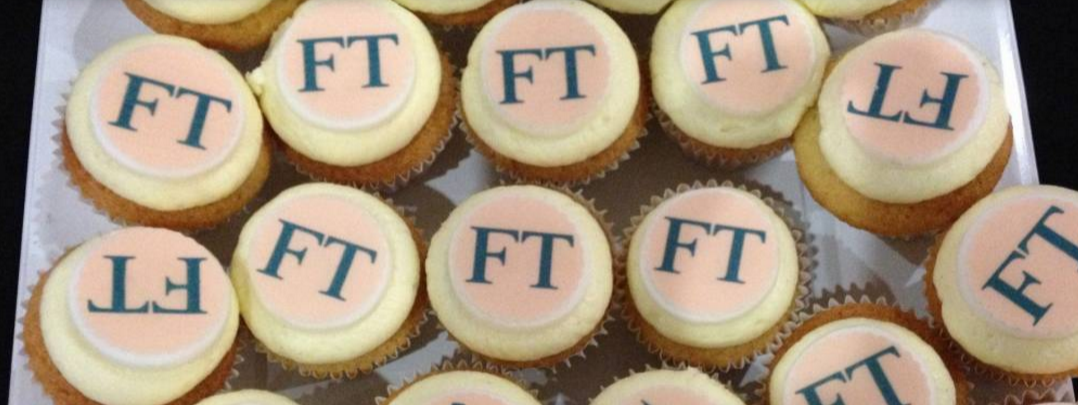Tech-Media News Beat, Only Hope for Newsstand, HBR’s Record Growth, German Publisher’s Fact-Checking Team, August Book Picks, TFP’s Infographic Pick of the Week
Welcome to Technology for Publishing’s roundup of news, stories of interest, and tips for media industry pros! This week, we’re sharing posts about the converging news coverage of tech and media, the only hope for newsstand publishers amid declines, how a German media group does fact-checking right, Harvard Business Review’s print-digital success, and more.
 As a Poynter post points out, news coverage of tech and media is increasingly reflecting the growing convergence of the two industries, with top news orgs like the Financial Times combining the beats. Today, the report notes, tech journalists are covering the big tech platforms pushing into the realm of publishing and entertainment, while media reporters are focusing more and more on the technology enabling distributed publishing. “Whether it’s Snapchat’s bouncing hot dogs or Pokemon Go, the interesting tech stories are content stories,” says FT technology reporter Tim Bradshaw, who recently relocated to Los Angeles to cover “the intersection of tech and media.”
As a Poynter post points out, news coverage of tech and media is increasingly reflecting the growing convergence of the two industries, with top news orgs like the Financial Times combining the beats. Today, the report notes, tech journalists are covering the big tech platforms pushing into the realm of publishing and entertainment, while media reporters are focusing more and more on the technology enabling distributed publishing. “Whether it’s Snapchat’s bouncing hot dogs or Pokemon Go, the interesting tech stories are content stories,” says FT technology reporter Tim Bradshaw, who recently relocated to Los Angeles to cover “the intersection of tech and media.”- It’s no secret the newsstand is in serious trouble, with the Alliance for Audited Media reporting a record 18% decline in annual unit sales and a 14% drop in revenue. “Every multi-titled publisher, except National Geographic, took a serious sales licking,” Folio columnist Baird Davis says. But there is still a glimmer of hope, he adds—if the top publishers work together to reform the channel. “The fate of the newsstand now largely rests with six publishing companies: American Media, Bauer, Time Inc., Hearst, Condé Nast, and Meredith,” Davis notes, which together account for approximately 90% of unit sales and more than 84% of revenue. More specifically, he argues, “industry mavericks” American Media and Bauer—which have large newsstand circulations and therefore the most to lose—need to take a leadership role in order for any reform efforts to succeed.
- Another Folio post takes a look at Harvard Business Review’s record growth this year—even as it reduced its number of print issues. Although declining in frequency, EIC Adi Ignatius says the print magazine is still the brand’s “crown jewel,” recently undergoing a redesign aimed at enhancing its premium look and feel. As part of the revamped publishing schedule, HBR is running a new digital series in the months between print issues called “The Big Idea,” with each installment including articles and other content focused on one main topic. So far the strategy is working: According to the article, paid circulation rose 10.2% in the first half of 2017, exceeding 300,000 subscribers for the first time, and both advertising and newsstand sales ticked up as well.
- And this report from Digiday: While news outlets everywhere are scrambling to deal with the proliferation of misinformation and fake news, fact checking has been a matter of course since the 1950s at German media company Spiegel-Gruppe. The fact-checking team, now 70 staffers strong, was established after the publisher launched its first weekly magazine, Der Spiegel. Well integrated into the editorial workflow, the group is organized by expertise—for example, politics, science, economics, foreign affairs, culture, and sports—and team members often have doctorates in their areas of expertise, the article notes. The publisher sees its investment as critical given the value audiences are now placing on quality journalism: “This kind of fact-checking has been an important part of the success story,” says team leader Dr. Hauke Janssen.
On the Technology for Publishing Blog
- Stay on top of the latest trends: TFP’s August Book Picks examine today’s era of media overload, fake news, and emerging technologies and how they intersect, shaping the future of business and the world.
- Travel to the far corners of the globe—without getting up from your beach chair! This week we bring you an infographic pick highlighting iconic books set in 150 countries around the world.
- ICYMI: Got an InDesign document that’s behaving badly? Read Monica Murphy’s latest InDesign Tip on how to use the Move Pages command to troubleshoot the problem.
- Learn how to create great apps! Get a copy of our e-Book on Amazon: Building Apps with Adobe Experience Manager Mobile.
Image: Poynter
Visit our blog for highlights of interesting and noteworthy stories from the publishing world every Friday, and sign up for TFP’s This Week in Publishing newsletter. Think we missed something great? Let us know! Leave a comment below or drop us a note.
Posted by: Monica Sambataro


